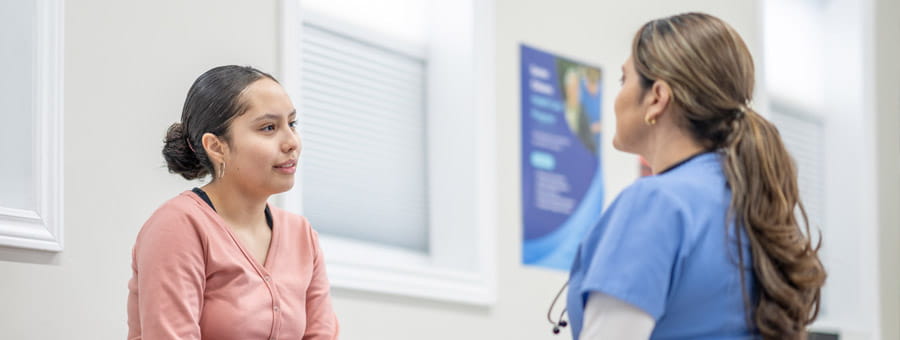Facing an ongoing behavioral health crisis among the nation’s youth, children’s hospitals are devising creative solutions to address the large—and growing—need.
For one children’s hospital, that includes building a behavioral health workforce essentially from the inside out.
“We wanted to improve the confidence and the competence of the frontline staff by equipping them with the skills needed to take care of these children and adolescents,” says Lisa Schneider, M.S., B.S.N., RN, PMH-BC, NEA-BC, nursing director of behavioral and mental health at Children's Healthcare of Atlanta. “One of the best ways to do that is to educate on those skills and then model them in real time—that’s where our behavioral and mental health (BMH) nursing team comes in. Not only do they provide direct patient care, but they also educate frontline staff on their trauma-informed approach.”
The BMH nursing team is part of a larger effort by Children’s to create a “pediatric behavioral and mental health ecosystem that improves outcomes, reduces stigma and enhances access to prevention, diagnosis and treatment.” That includes community-based initiatives to address child behavioral health conditions as early as possible and to expand outpatient access to an array of effective, evidence-based interventions that are otherwise difficult for youths and families to acquire. Within the walls of Children’s, the BMH nursing team is central to the organization’s goals.
Building a team from within
Children’s began assembling the team in the fall of 2020 and within a year had reached fully staffed status—24/7 coverage with two BMH nurses and techs for the organization’s two larger campuses and one BMH nurse and tech for their smaller hospital campus. To accomplish that feat given the nationwide shortage of behavioral health care providers, Schneider and her team got creative with their recruitment strategy. They looked at internal as well as external candidates to provide a diverse blend of experiences and backgrounds. And while previous psychiatric training or experience was welcome, it wasn’t a requirement.
“I can train nearly anyone on the basics of psychiatric care, such as diagnoses and medications,” Schneider says. “What I can't teach is the passion and empathy for this patient population, so that is one of the biggest characteristics we looked for—patient engagement and the therapeutic use of self is essential to success.”
Substantial improvements in DART and restraint utilization
The BMH nursing team has already had a positive impact on safety and patient outcomes at Children’s:
- Logged more than 15,000 patient encounters since December 2020.
- Responded to more than 740 Behavioral Health Emergency Response Team (BERT) incidents.
- Reduced Violent/Self-Destructive (VSD) restraint utilization resulting in a center-line shift from 1.8 per 1,000 ED visits in 2020 to 0.9 thus far in 2023.
- Drove a significant decrease in patient-related employee injuries; DART (days away, restricted or transferred) rates dropped from 0.13 in 2019 to 0.08 in 2022.
An essential driver of those improvements is a patient coping plan. Integrated into the hospital’s EMR, coping plans include individualized patient history, communication preferences, triggers and calming techniques designed to prevent patients from reaching a crisis.
The BMH nursing team has created and implemented more than 4,400 coping plans in the last two years for patients across the hospital—from children coming in for a surgical procedure to those with acute behavioral health needs.
The key to lasting success
Schneider says strong leadership support is essential to launching and maintaining a project of this scope. But one of the most important factors to success is continuous education. The aim is to meet the needs of employees at all levels of the organization with training that’s as seamless as possible. BMH system educational modules have been integrated into annual computer-based training and competencies. The team has also incorporated BMH content into new employee orientation and the nurse residency program and have launched BMH Town Halls.
“We spent a lot of time setting up a framework of system-wide ongoing education so that all members of the organization have a shared understanding of why we are here, the language we’re using and what our ultimate goals are for these patients and caregivers,” Schneider says.



